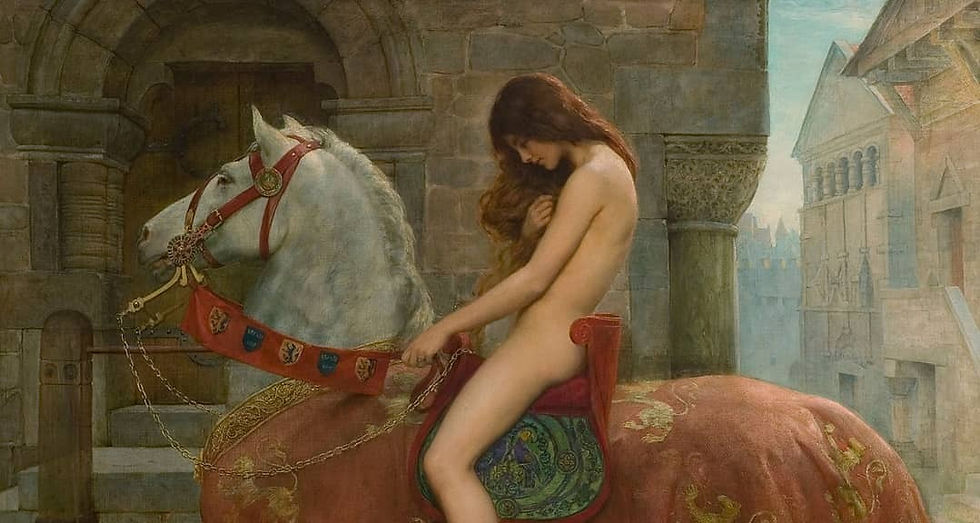

The Pre-Raphaelites
Randy H. Sooknanan
ASAG Journal
August 21, 2020
The Pre-Raphaelite Brotherhood was a group of English artists, writers, and critics who were active in the mid-19th century. Founded in 1848, the Pre-Raphaelites aimed to reform the art world by rejecting the conventions of the Royal Academy of Arts and the classical traditions of the Renaissance. They believed that contemporary art had lost its moral purpose and sought to revive the sincerity and spiritual intensity of medieval art.
The Pre-Raphaelites emphasized a return to nature, vivid colors, and painstaking detail. They preferred to work with natural light, which gave their paintings a luminous quality. Their subject matter ranged from mythological and historical scenes to contemporary life, while they often included symbolic elements and literary references. They were also known for their depictions of women, who were often portrayed as ethereal and idealized. The Pre-Raphaelite Brotherhood was a significant influence on the Arts and Crafts movement and the Aesthetic movement, and their legacy can be seen in the works of many modern artists.
Let's take a look at some artworks and the artists who made them from this movement in Art History...
The Legend of Lady Godiva
"Lady Godiva" is an 1898 painting by the English artist John Collier, who worked in the style of the Pre-Raphaelite Brotherhood.
Here we see a portrayal of Lady Godiva during her well-known ride through Coventry, England. Lady Godiva was a late Anglo-Saxon noblewoman and the wife of the Earl of Mercia, named Leofric, who was a patron of various churches and monasteries.
Today, she is remembered for a Legend that dates back to the 13th century, in which she rode naked, covered only in her lengthy hair, through the streets of Coventry. According to the story, she took pity on the tenants of Coventry, who were suffering under her husband’s rule.
Lady Godiva had asked her husband numerous times to reduce the tolls and oppressive taxation on the people of the Coventry. He refused every time, and when he grew tired of her appeals, he said he would grant her request if she would strip naked and ride on a horse through the streets of the town, assuming that she would not undertake such an act. Lady Godiva did just that and proclaimed that all persons should stay indoors and shut their windows as she rode through the town, clothed only in her long hair.
Just one person in the town, a tailor known as Thomas, disobeyed her proclamation. Thus afterward, the term for a voyeur as a "Peeping Tom” originated from later versions of this legend.
Other attempts to find a more plausible rationale for the legend include that Lady Godiva might have gone through town as a penitent in her nightgown, devoid of her noble jewelry and dress garments. Godiva’s story could have passed into folk history to be recorded as a more romanticized version in which she rode stark nude.
"Lady Godiva"
Artist: John Collier
Year: 1898
Medium: Oil painting on canvas
Style: Pre-Raphaelite - a group that were a secret society of young artists (and one writer), founded in London in 1848. They were opposed to the Royal Academy's promotion of the mechanistic approach first adopted by Mannerist artists who succeeded Raphael and the Quattrocento period in Italian art.
Location: Herbert Art Gallery and Museum, Coventry, England
Figures
The Legend of Lady Godiva
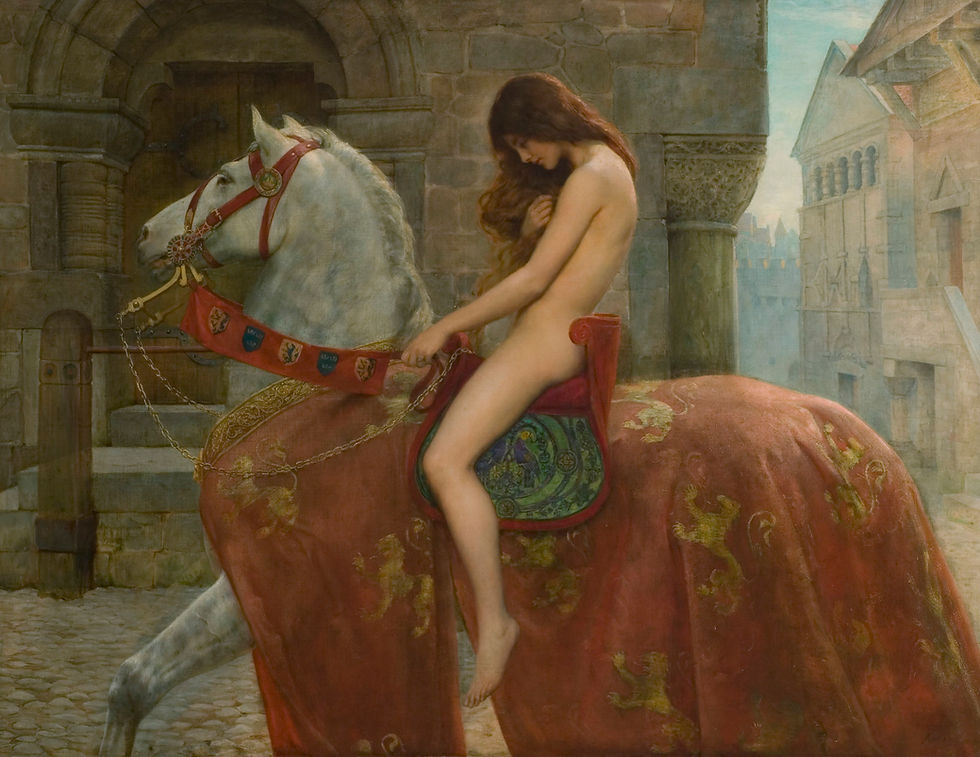
John Collier, Public domain, via Wikimedia Commons Herbert Art Gallery and Museum https://en.wikipedia.org/wiki/Lady_Godiva#/media/File:Lady_Godiva_(John_Collier,_c._1897).jpg
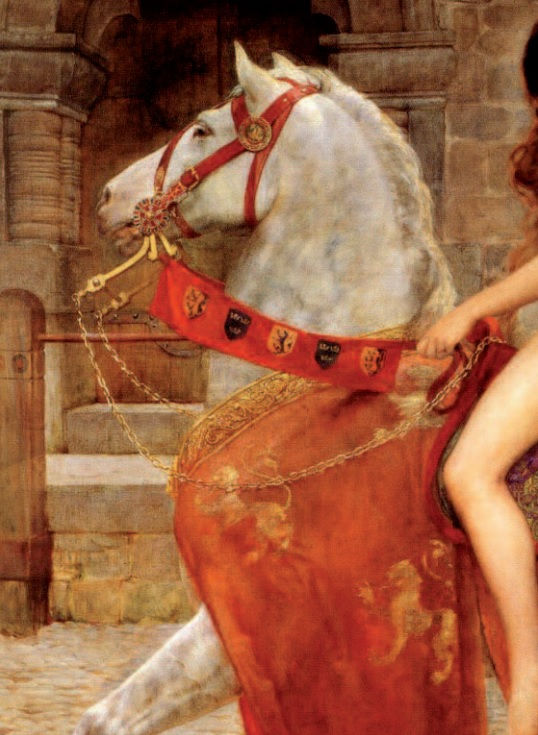
John Collier, Public domain, via Wikimedia Commons
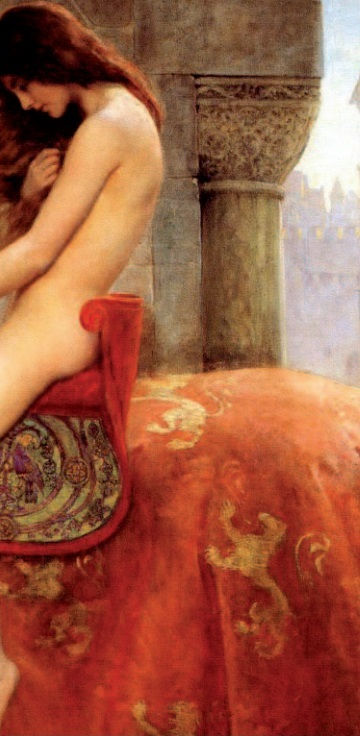
John Collier, Public domain, via Wikimedia Commons
The Death of Cleopatra (1890) by John Collier
Collier is better known as a portrait painter but he did paint a couple history paintings, this one being the largest painting he ever attempted at 10×13.’ He went and stayed in the Great Temple at Philae in southernmost Egypt in order to reproduce the backdrop to the scene with historical accuracy.
Collier has depicted Cleopatra on the divan, already dead after committing suicide by poisoning. Her two maids, Eiras and Charmion, are reported to have taken their lives alongside their queen. One maid has collapsed on the floor while the other is succumbing to the poison as she leans against the divan, although the lack of panic on her face makes it seem more like she’s sexily lounging about (we’ll chalk that up to the taste of 19th Century heterosexual males). Collier has not shown us the famous asp that is said to have bitten Cleopatra, for there has never been definitive evidence that that is how she died. (Narrative Painting)
Artist: John Collier (1850-1934) Victorian Neoclassical painter
Artwork: 'The Death of Cleopatra' (1890)
Size: 395 x 315cms | 155 1/2 x 124 ins
Medium: Oil on canvas
Period: Romanticism
Genre: History painting
Location: Oldham Art Gallery, Oldham, UK

The Death of Cleopatra, 1890 by John Collier
John Collier, Public domain, via Wikimedia Commons
https://commons.wikimedia.org/wiki/File:The_death_of_cleopatra.jpg
Lady of Shalott (from Arthurian legend) in Paintings by John William Waterhouse
John William Waterhouse (1849–1917) was an English painter known for working first in the Academic style and for then embracing the Pre-Raphaelite Brotherhood's style and subject matter. His artworks were known for their depictions of women from both ancient Greek mythology and Arthurian legend.
"The Lady of Shalott", an 1888 oil-on-canvas painting, is one of John William Waterhouse's most famous works. It depicts a scene from Tennyson's poem in which the poet describes the plight and the predicament of a young woman, loosely based on the figure of Elaine of Astolat from medieval Arthurian legend, who yearned with an unrequited love for the knight Sir Lancelot, isolated under an undisclosed curse in a tower near King Arthur's Camelot.
Waterhouse painted three versions of this character in 1888, 1894 and 1915.
1. First we see his 1888 work entitled "The Lady of Shalott" which is housed within The Tate Britain Gallery in London
2. Secondly his 1894 "The Lady of Shalott Looking at Lancelot" which is on display at The Leeds City Art Gallery in England
3. And, finally, Waterhouse's third Lady Shalott as a subject painting which is named "I am Half-Sick of Shadows, said the Lady of Shalott". This one was completed in 1915 and is located at The Art Gallery of Ontario, Toronto
Figures
Lady of Shalott (from Arthurian legend) in Paintings
by John William Waterhouse

John William Waterhouse, Public domain, via Wikimedia Commons
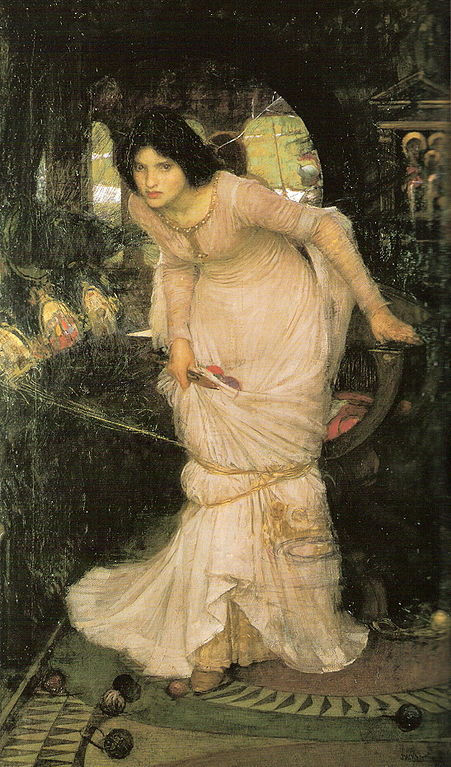
John William Waterhouse, Public domain, via Wikimedia Commons
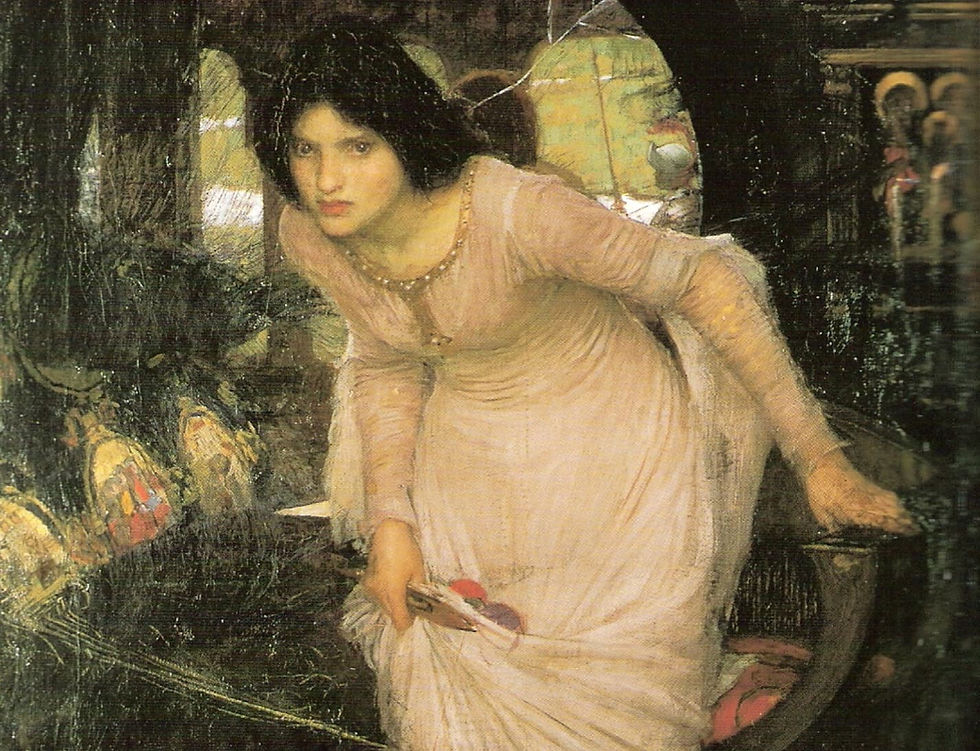
John William Waterhouse, Public domain, via Wikimedia Commons
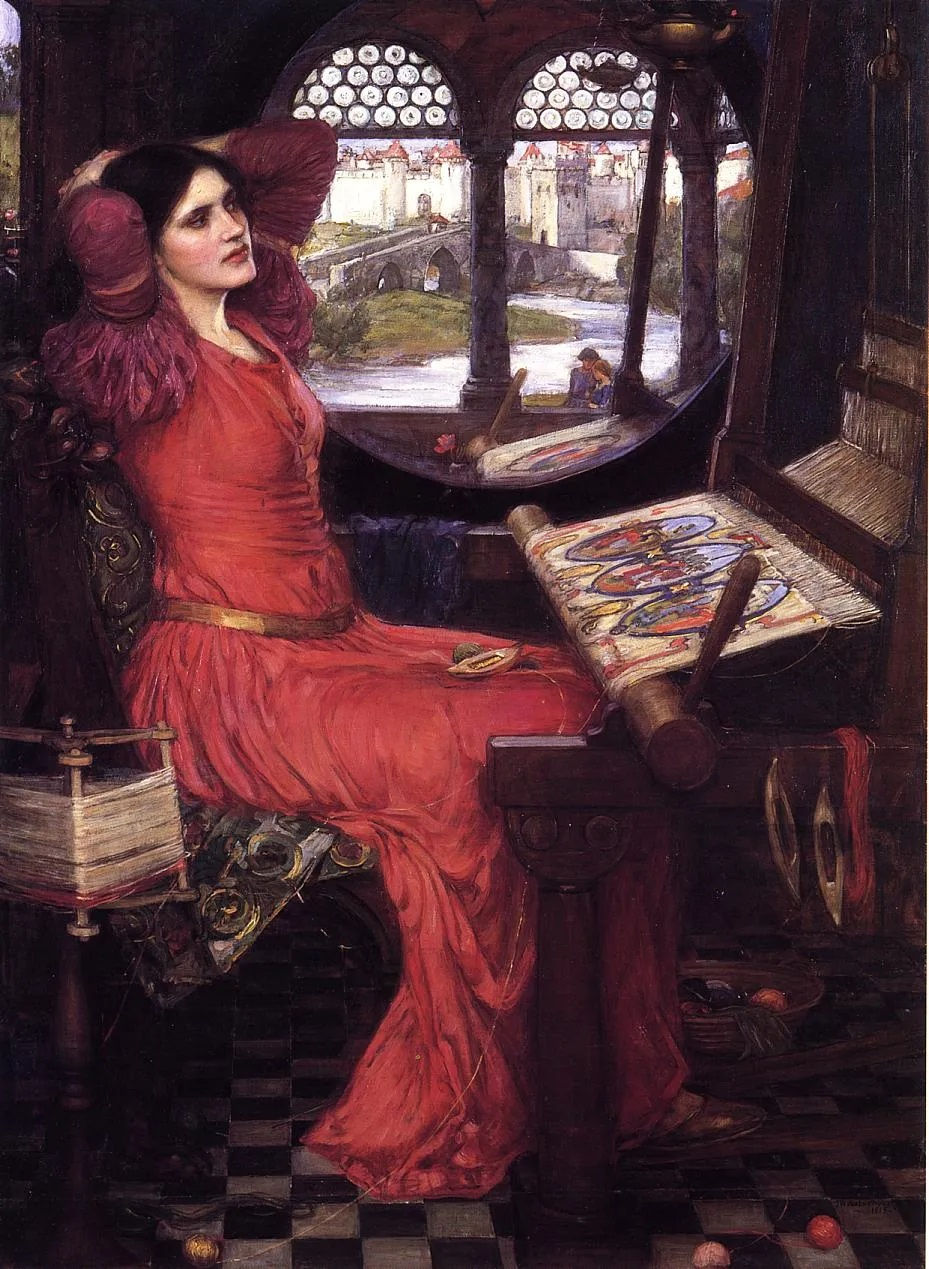
Credit: Artsy https://www.artsy.net/artwork/john-william-waterhouse-i-am-half-sick-of-shadows-said-the-lady-of-shalott
"The Danaïdes" (1903/1906) by John William Waterhouse (1849-1917)
Waterhouse was an English sculptor turned Pre-Raphaelite painter. His artwork is best known for illustrations of women from ancient Greek mythology and legends and medieval stories centred around King Arthur. Hunt and Millais, artists who were founders and propagators of the Pre-Raphaelite influences in art, greatly influenced Waterhouse’s painting with the incorporation of literary themes and spiritual influences.
As women and water somehow intrigued Waterhouse, it is no surprise that he painted the myth of “The Danaïdes”. The Danaides were the 50 daughters of King Danaus of Argos, who were all married on a single occasion to 50 suitors, the 50 sons of Danaus's twin brother and rival Aegyptus, king of Egypt. At their father’s instructions all but one of them killed their husbands on their wedding night. Only 1 daughter refused to assassinate her husband because she truly loved him and this couple started the dynasty of the new rulers of Argos. The 1 remaining husband killed Danaus and the 49 sisters were sentenced to death and in the underworld they are condemned to fill a large jar with a big hole in it. Condemned they spend eternity having to draw water from a well and pour it into a vessel from which it continually escapes. In the classical tradition, the Danaides come to represent the futility of a repetitive task that can never be completed.
The first painting on this subject done in 1903 is regarded as a study of the second one that was completed two years later. The 1903 version was discovered in 1989, but it is nevertheless a painting in its full right. It is part of a private collection. The later 1906 version was submitted to the Royal Academy when done, then sold to the magnate James Murray and ended up in the Aberdeen Art Gallery in 1927.
The colours in the Danaides II, are brighter as compared to the earlier work with the maidens’ garments in more vibrant color palette. The artist also incorporates more hues. Also in the second version we see seven figures as opposed to the original’s five figures and the work is more prominent in overall size.
Figures
The Danaïdes by Waterhouse
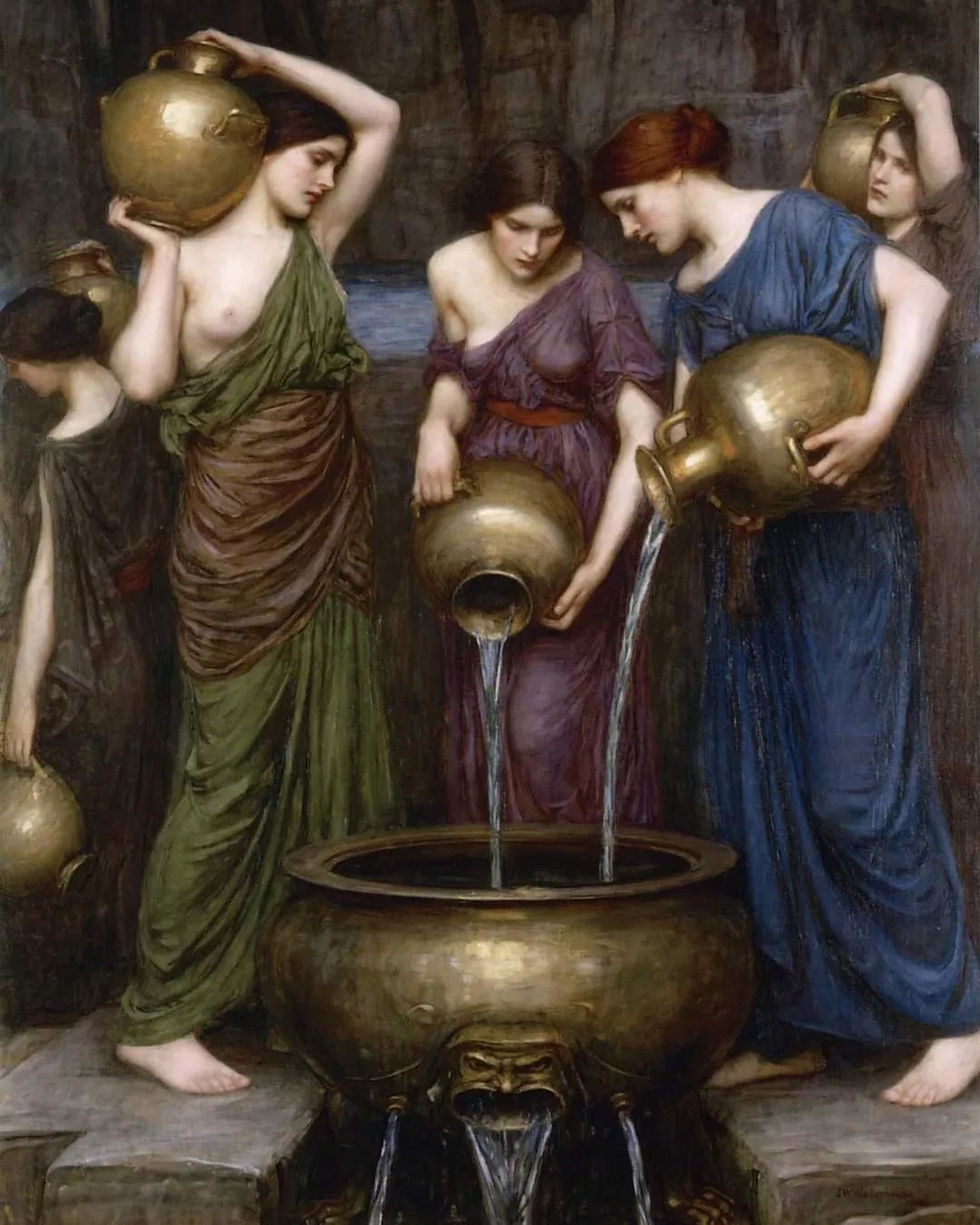
John William Waterhouse, Public domain, via Wikimedia Commons https://commons.wikimedia.org/wiki/File:Danaides_by_John_William_Waterhouse,_1903.jpg
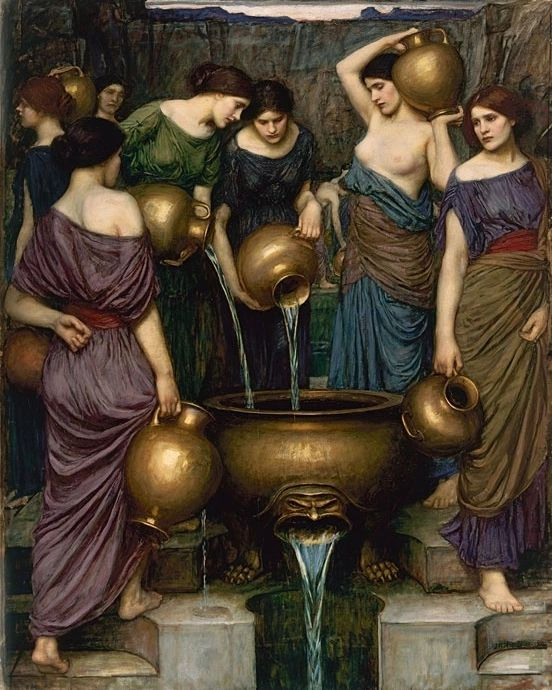
https://www.wikidata.org/wiki/Q21190365
'Vanity' (1907) by Frank Cadogan Cowper
Figures
'Vanity' (1908) by Frank Cadogan Cowper
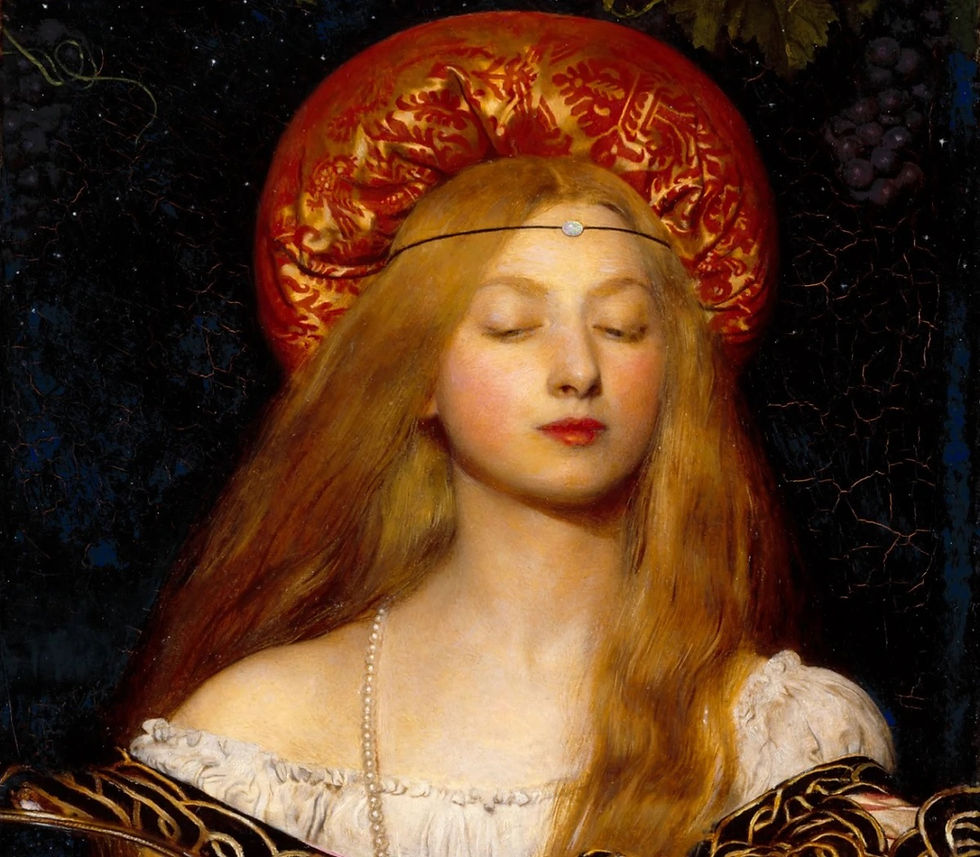
Credit: Wiki art https://www.wikiart.org/en/frank-cadogan-cowper/vanity-1907
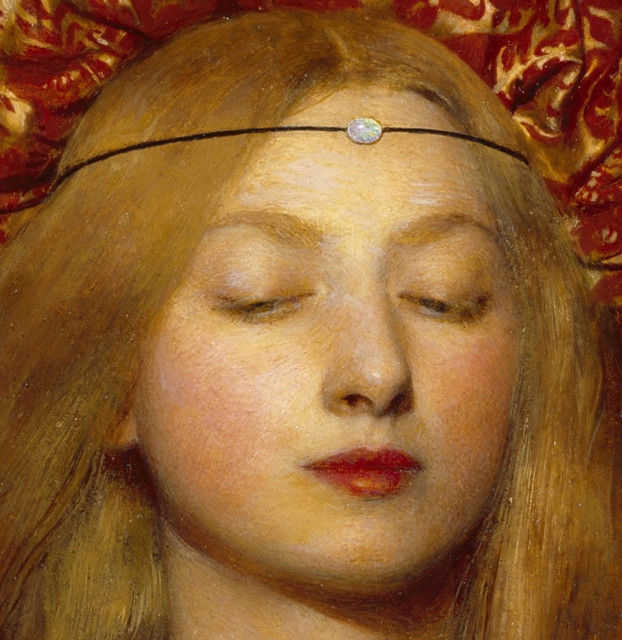
Credit: Wiki art https://www.wikiart.org/en/frank-cadogan-cowper/vanity-1907

Credit: Wiki art https://www.wikiart.org/en/frank-cadogan-cowper/vanity-1907
Ulysses and the Sirens, 1891 by John William Waterhouse
John William Waterhouse's painting "Ulysses and the Sirens" depicts the legendary Greek hero, Ulysses, navigating his ship through treacherous waters while being tempted by the seductive songs of the Sirens. It draws on the Homeric epic "The Odyssey," which tells the story of Ulysses' ten-year journey home from the Trojan War. In Greek mythology, the Sirens were beautiful women with bird-like wings known for their irresistible and deadly singing that lured sailors to their deaths.
We see a rocky shoreline with rough waves crashing against a rather dangerous part of a straight and the crew's path to salvation. In the background, a glorious sunrise is visible, casting a golden glow over the scene and emphasizing the dangers of temptation that Ulysses must overcome. In this work, we also see that Ulysses has been tied to the ship's mast in an effort to resist the Siren's charms while his crew has their ears blocked to avoid being lured to their doom.
Waterhouse's use of vibrant colours and detailed brushstrokes captures the intense drama of this part of the story. The Sirens circling around and perched upon the ship, their bodies twisted and contorted in a seductive yet menacing manner, gives us a powerful representation of the dangers of temptation and the heroic struggle to resist it.
In all, Waterhouse created an image that not only does justice to one of the classical poem's many allegories but a composition that continues to captivate viewers over a century after it was completed. Indeed the mythological subject matter and the illustrated tension between Ulysses's temptation and restraint make it a classic example of Pre-Raphaelite art.
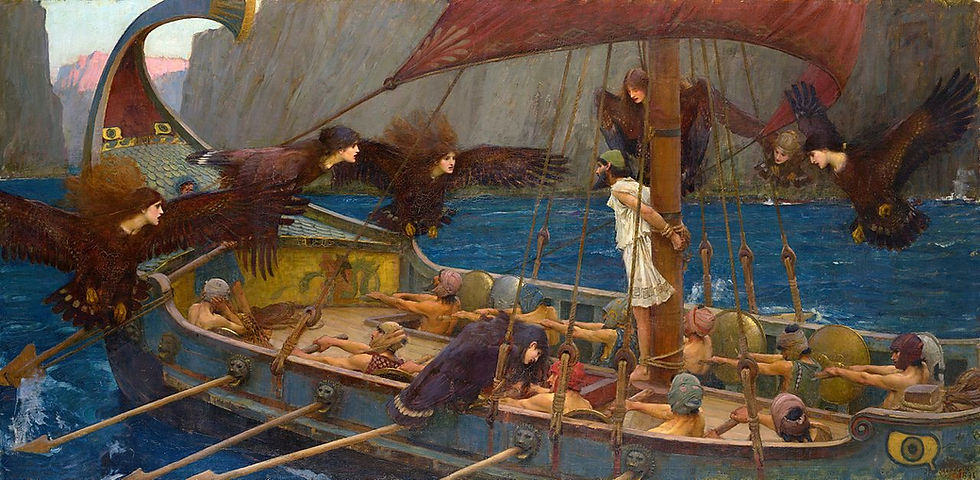
John William Waterhouse, Public domain, via Wikimedia Commons




